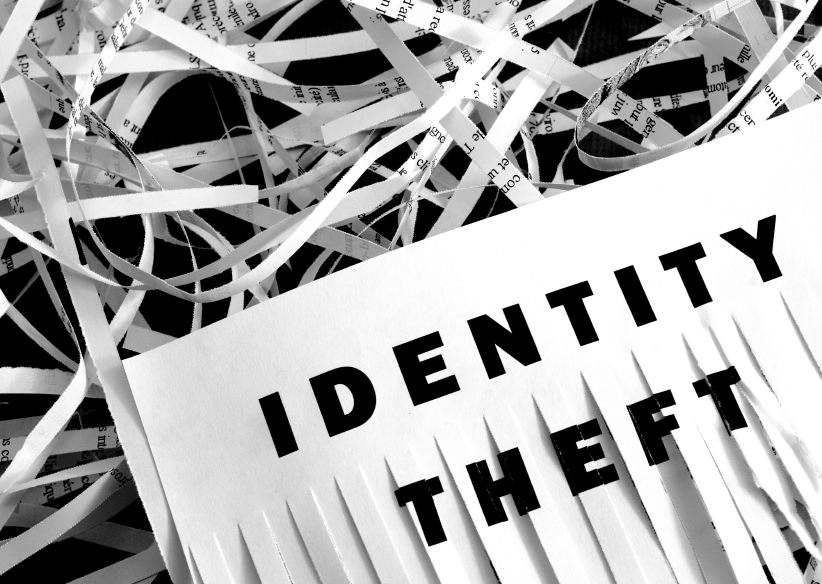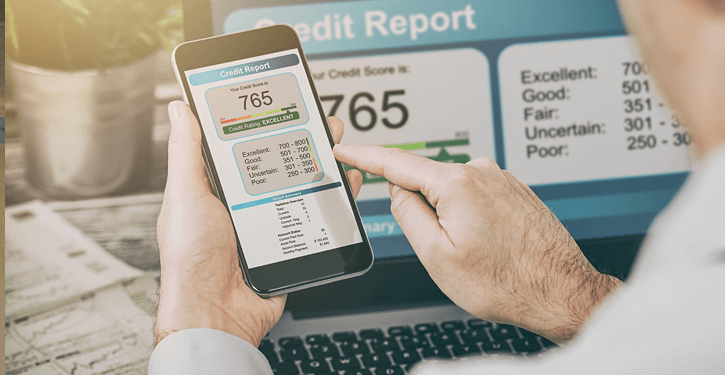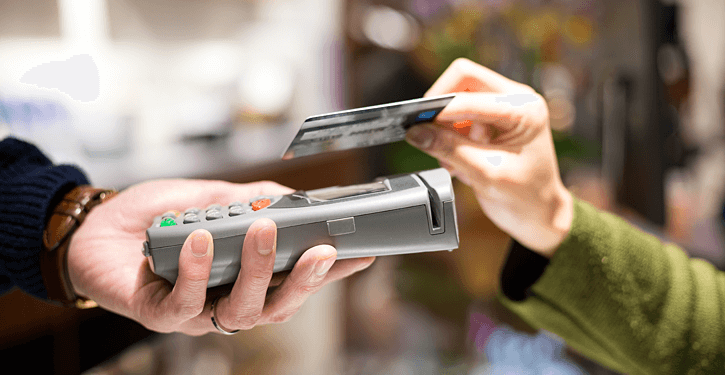The discovery of identity theft is bound to be one of the most anxious and stressful moments a person can experience. When an identity thief gets his (or her) hands on your personal information, they gain the power to wreak havoc on your finances, credit and reputation.
Minimize the chance that you will fall victim to an identity thief, and find out what to do if you suspect your identity has been compromised. Credit Sesame has created this guide to arm you with knowledge about how and when identity theft can happen, what the warning signs are, what prevention measures you can take, and what you can do to respond to identity theft in your life.
What is identity theft?
In simple terms, identity theft occurs when someone uses your personal information, such as your name and Social Security number, without your permission. You might think of identity theft as most often related to credit or banking. For example, a thief opens a credit card in your name uses it to make purchases. In reality, the scope is much broader.
1. Tax- and wage- related identity theft
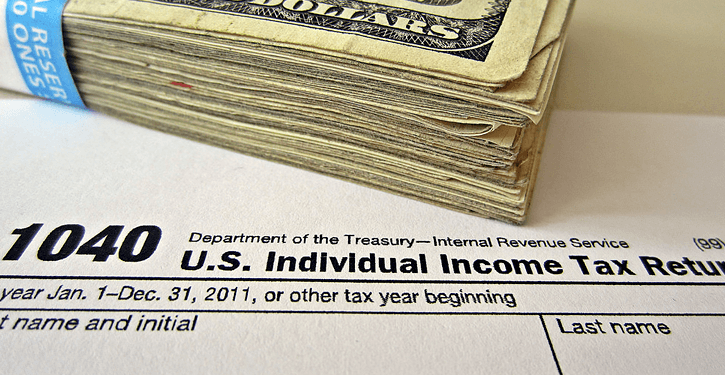
Tax- and wage-related fraud is the most common type of identity theft, accounting for 45 percent of all reported cases. Tax identity theft happens when someone steals your identity and files a fraudulent tax return in your name. Wage-related fraud occurs when someone uses your identity to earn and collect wages.
2. Financial identity theft
Financial identity theft is the use of your personal information for financial gain. The credit card example above is a good example. Fraudulent access to your bank account is another. The Federal Trade Commission estimates that credit card fraud and bank fraud account for 16 percent and 6 percent, respectively, of all identity theft cases reported annually.
3. Medical identity theft
A medical identity thief uses your identity to get healthcare. If you’ve ever received a doctor bill in the mail for treatment that you don’t remember getting, you could be a victim of medical identity theft. Medical identity theft not only leaves a stack of medical bills, it also causes incorrect information to be placed in your medical file.
4. Child identity theft

Children are often targeted by identity thieves. One reason is that children have clean credit files. They haven’t had a chance to let any bill go unpaid. So with careful use, a child’s identity is the ticket to a smorgasbord of credit. Also, in many cases the fraud is not discovered for many years, so the thief has plenty of time to fully leverage the stolen identity. Perpetrators are often relatives. Javelin estimates that in 2015, 1.2 million parents received notifications that their child’s Social Security number had been compromised.
5. Driver’s license identity theft
When an identity thief targets your wallet, he may be looking for more than cash and credit cards. Your driver’s license can be used to hide the criminal’s true identity in the commission of various types of crimes. Imagine the financial and insurance nightmare you’ll face if a fraudster gets speeding tickets or wrecks a car while claiming to be you.
6. Criminal identity theft
In an even worse -case scenario, an identity thief could use your information to commit a more serious crime, or hurt someone.
How much do identity thieves steal?

Identity theft is one of the fastest growing crimes in the U.S. Between 2014 and 2015, identity theft complaints to the Federal Trade Commission increased by 47 percent. According to Javelin Strategy & Research’s 2016 Identity Fraud Study, identity thieves stole $15 billion from 13.1 million U.S. consumers in 2015. Collectively, identity thieves made off with $112 billion over the past six years, which breaks down to $35,600 stolen every minute.
The Javelin study revealed that one type of identity theft increased by 113 percent in 2015: new account fraud. This spike is in response to the nationwide implementation of the EMV Compliance Mandate, which places fraud liability on businesses that fail to upgrade their point-of-sale systems to accommodate EMV chip credit cards. Overall, new account fraud accounts for 20 percent of all fraud losses.
Identity theft can happen anywhere. Here in the U.S., Missouri has the highest per capita rate of identity theft reports, according to the Federal Trade Commission’s Consumer Sentinel Network Data Book, followed by Connecticut and Florida.
Identity theft and your credit
Your credit score is a primary consideration when lenders evaluate your application for a credit card, car loan, mortgage or other credit product. Identity theft can impact your score in a big way.
Generally speaking, credit scores are based on a handful of factors, including:
- Payment history
- How much of your available credit you’re using
- The age of your credit accounts
- The types of credit you’re using
- How often you apply for new credit
Identity theft can affect all of these factors and bring your score down in the process. For instance, if a thief opens three new credit cards in your name, the inquiries will each lower your score, your overall file age will go down (and your score with it), the balances will affect your utilization ratio, and the payment history (or failure to pay) will have a big impact on your credit rating. o affects the average age of your credit history.
The key thing to remember is that identity theft hurts your credit the most when it goes unnoticed. Once you catch on, you can take steps to shut down fraudulent accounts and clean up your credit. More on that in a minute.
Are you legally responsible for fraudulent charges?
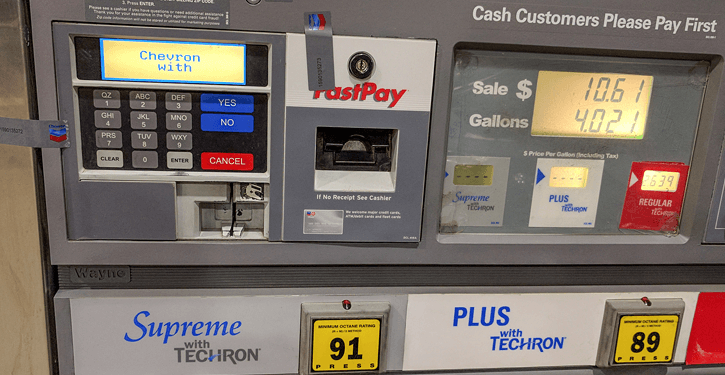
When you find out that someone has racked up debt in your name, the first thing you may wonder is whether you’ll be on the hook to pay it back. When the identity theft involves a debit or credit card, your losses are limited under the Fair Credit Billing Act and the Electronic Fund Transfer Act.
Liability for fraudulent credit card charges
The Fair Credit Billing Act caps your liability for unauthorized credit card purchases at $50, and many credit card issuers lower this to $0. If you report a lost or stolen card before it is used, your liability is always zero. Also, if someone steals your credit card number but not the card itself, you’re not liable for any unauthorized use.
Liability for ATM and debit card fraud
For stolen ATM and debit cards, your liability depends on how quickly you report the loss or theft.
Your liability is $0 if you report a lost or stolen card before any unauthorized charges are made. Your liability is $50 if you report within two business days after you learn of the loss or theft. If you wait more than two but less 60 days to report a lost or stolen debit card, your liability is $500. After 60 days, your liability has no upper limit. Report identity theft as soon as you suspect it.
What to do when your identity is stolen
If you suspect identity theft, act quickly to minimize any negative consequences. Below are some key steps to take to stop an identity thief in their tracks.
The first thing you should do is to sign up for Credit Sesame’s credit monitoring service now, before you become a victim. Credit Sesame membership is 100% free, and no credit card is required to sign up. All Credit Sesame members get $50,000 in free identity theft insurance and live support through the process of identity restoration.
1. Put a fraud alert on your credit reports
A fraud alert puts a red flag on your credit report and notifies lenders and creditors that they should take extra steps to verify your identity before extending credit. To place a 90-day fraud alert on all three of your credit reports, you only need to contact one of the three credit reporting agencies (Experian, Equifax, or TransUnion). When you place the initial alert, the agency will automatically notify the other two for you.
When you place a fraud alert on your credit reports, you’re entitled to a free copy of your credit report from each of the three agencies. Be sure to obtain them. If you find fraudulent items on your credit report(s), the simplest way to begin the dispute process is to click the dispute button while viewing your credit report summary online. Some items must be disputed in writing and with supporting documentation. Hard inquiries cannot be disputed, but may give you a clue as to where a thief has applied for credit in your name.
Initial fraud alerts are free and remain in place for 90 days. In some cases, extended fraud alerts incur a small fee, but under most circumstances fraud alert services are free to victims of identity theft.
Another option—and a more effective identity theft prevention measure—is to place a security freeze on each of your credit reports. A freeze prevents creditors (except those with whom you already do business) from accessing your credit report(s) at all. Most new applications will automatically be declined because without access to your file, the creditor will have no way to evaluate your credit. With a security freeze in place, you will need to take extra steps if you wish to apply for new credit. Each agency has a procedure for temporarily “thawing” your file in order to allow a legitimate application to be processed. Unlike a fraud alert, you’ll need to contact each credit reporting agency individually to place a freeze on your files. See more information about credit freezes here:
– Experian: https://www.experian.com/freeze/center.html
– Equifax: https://www.freeze.equifax.com/Freeze/jsp/SFF_PersonalIDInfo.jsp
– TransUnion: https://freeze.transunion.com/sf/securityFreeze/landingPage.jsp
Not every state allows credit freezes to be placed by consumers who are not victims of identity theft, but every state allows identity theft victims to freeze their files. Some states charge a fee to freeze the file, and another fee to thaw it.
2. Contact any institution directly affected
If you know your credit card was stolen, report the theft to the credit card issuer. If your checkbook or debit card was stolen, contact your bank.
For this step it’s really helpful if you’ve prepared a list of institutions and phone numbers in advance. Don’t write down account numbers, PINs or passwords — that would be just one more way for a thief to gain access to your personal information. But know what you’ve got. Keep a list of what’s in your wallet, along with the contact information for each item. The best place to keep this list is on an encrypted secure online file storage site.
3. Contact the Federal Trade Commission (FTC)
File an Identity Theft Affidavit and a police report (see #4 below), and create an Identity Theft Report. You can file your report online, by phone (toll-free): 1-877-ID THEFT (877-438-4338); TDD (toll-free): 1-866-653-4261, or by mail — 600 Pennsylvania Ave., Washington DC 20580.
The FTC will provide you with information about what to do next, depending on what type of fraud was (or may have been) committed.
4. File a police report
To complete the Identity Theft Report, you’ll need to contact your local law enforcement office and report the theft. Be sure to get a copy of the police report and/or the report number. Both your police report and the FTC Identity Theft Affidavit combine to create your Identity Theft Report. Your Identity Theft Report will help you when working with the credit reporting agencies or any other entities the identity thief may have contacted to open accounts in your name.
5. Protect your Social Security number
If your social security number was or may have been compromised, contact the Social Security Administration (800-269-0271) and the Internal Revenue Service (800-829-0433).
It’s important to talk to the SSA and the IRS if you have reason to believe your Social Security number has been compromised, even if you don’t yet see any evidence of financial fraud. A thief could be planning to swipe your tax refund, or to obtain employment or health care in your name.
6. Contact the Post Office
If you have reason to believe the identity thief may have submitted a fraudulent change-of-address to the post office or has used the U.S. mail to commit the fraud against you, contact the Postal Inspection Service, which is the law enforcement and security branch of the post office. Fill out the online form.
This list is not exhaustive. These are only the first few steps. Indeed, clearing the wreckage of identity theft can be a laborious and complex process. For more information about how to prevent or recover from identity theft, the U.S. Department of Justice and the Federal Trade Commission offer a wealth of information and will walk you through the steps.
Preventing identity theft
The best defense against identity theft is a good offense. The more proactive you are about preventing identity theft, the better. Here are some things you can do to minimize the risk that you’ll fall victim.
- Lock down your Social Security number. Carrying your Social Security card in your wallet is a big no-no. Store it in a safe or a bank safe deposit box if you have one, or in a place at home where no one will stumble across it. Be very cautious about who you share your Social Security number with. Many people who ask for it routinely – including your doctor or dentist – do not need to have it. Your social security number should never be used as a form of ID. If you’re not applying for credit, keep it private. Never give out your SSN over the phone (unless you are 100% of the identity of the caller) or via email.
- Steer clear of phishing emails. Technology has made it possible for hackers, scammers and identity thieves to find their way into your inbox. You might receive a seemingly legitimate email from your bank or credit card issuer asking you to click on a link to verify your account information. When you click on it, however, you inadvertently give an identity thief access to your login details. Always verify the source of emails, and double check the URL on any website where you log in or enter personal details. Don’t downloading files unless you are sure of the sender.
- Be smart about mobile banking and shopping. Shopping and banking from your phone or mobile device is convenient but it will lead to headaches if an identity thief is able to intercept your personal information. If you use a shopping or banking app in a public place, don’t log in through public Wi-Fi. Also, shelter your entries from the view of anyone nearby who may be able to see your screen.
- Use complex, unique passwords and change them regularly. Security experts agree across the board that we shouldn’t use the same user ID or password for multiple accounts. Otherwise, any identity thief who cracks the code can access all of those accounts. Instead, use different passwords update them every few months. The passwords you use should include letters, numbers and symbols. Use a random password generator to create unique, complex passwords for each account, and keep them in an online password safe so that you won’t have to worry about remembering them.
- Sign up for free credit monitoring with Credit Sesame. Credit Sesame’s free credit monitoring service offers you free access to your TransUnion credit score and a complete debt profile. You also get free identity theft insurance and real-time notifications when something changes in your credit file. If you receive a notification that your credit score has changed and you suspect identity theft, coverage is already in place and an identity theft restoration specialist is standing by to help you resolve the situation. The insurance and support are offered completely free to all Credit Sesame members.
Identity theft is no picnic. The more you know, the better equipped you will be to ward off thieves and fraudsters.
Rebecca Lake contributed to this post.













